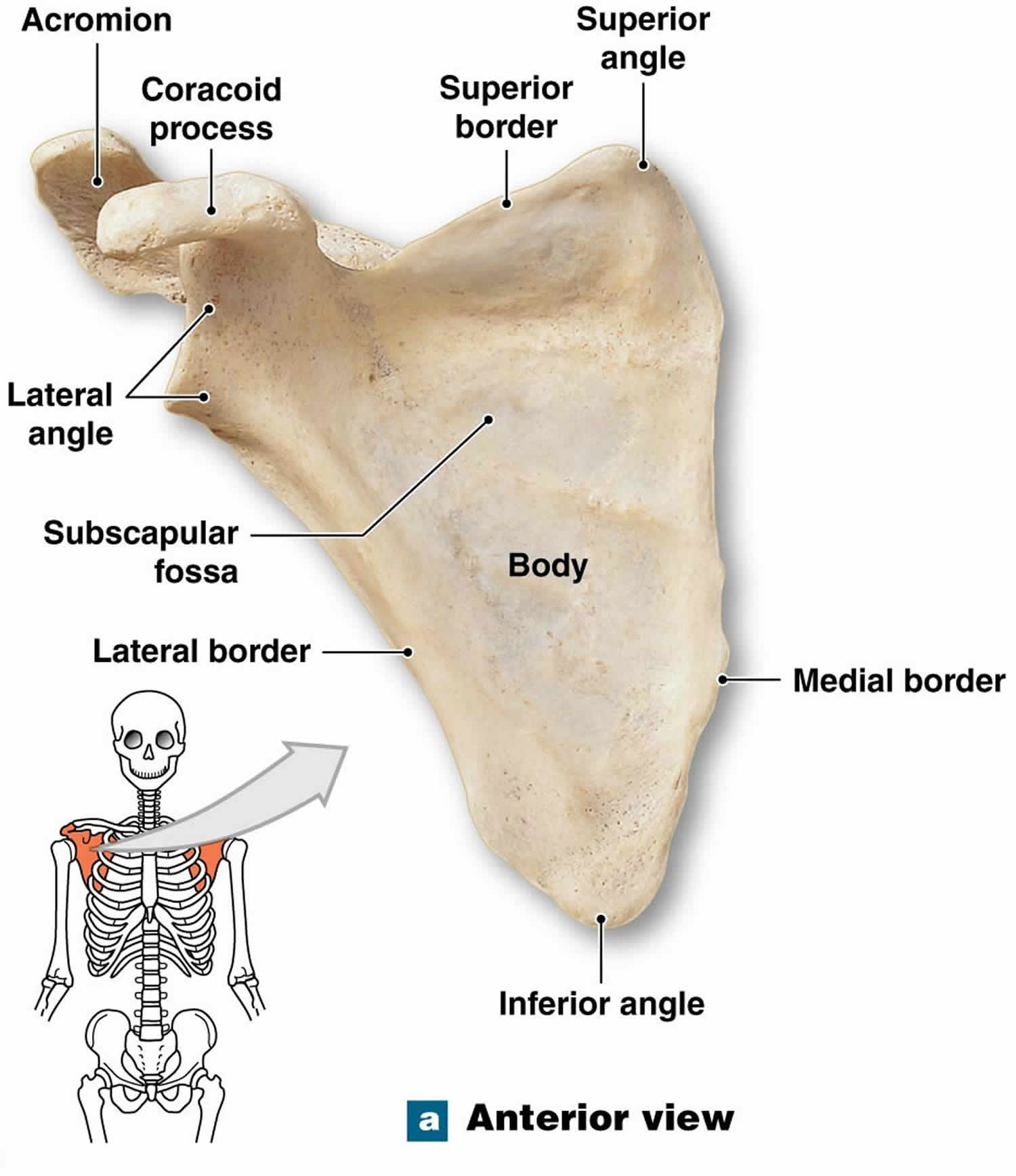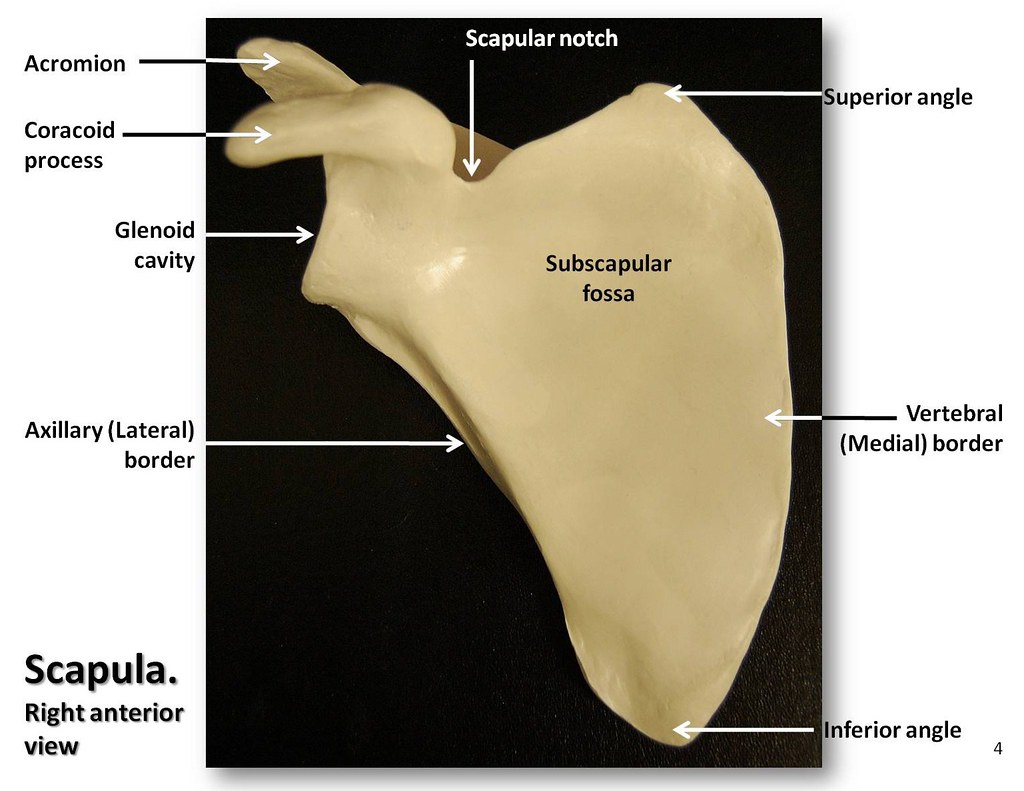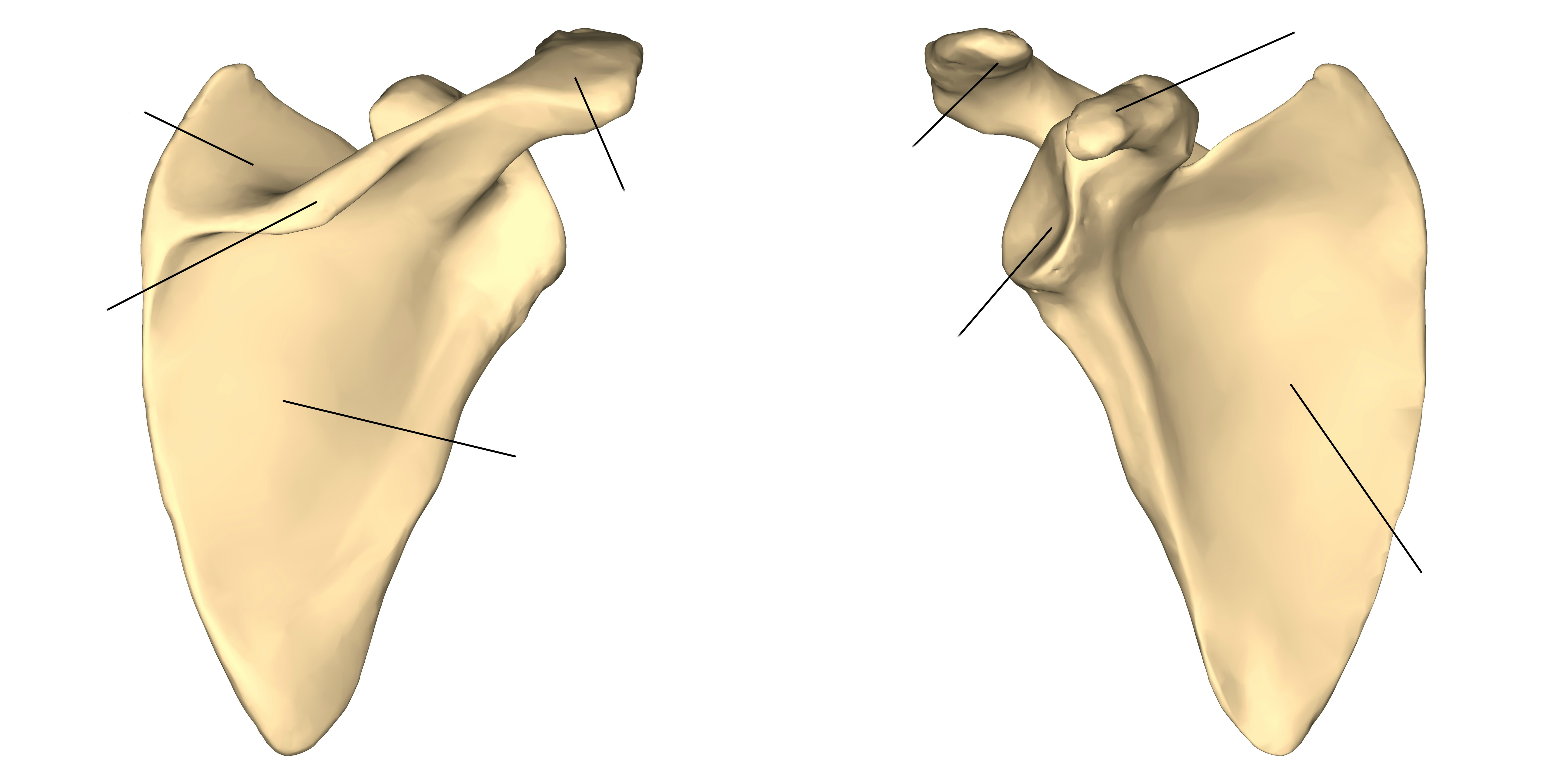
Scapula fracture causes, symptoms, diagnosis, treatment & prognosis
Bone markings are projections and depressions found on bones, which help us to identify the location of other body structures, such as muscles. Their importance comes when we try to describe the shape of the bone or to understand how the muscles, ligaments and other structures affect this bone and vice versa.

medical freak THE SKELETON OF THE UPPER LIMB
Scapula parts (landmarks and bone markings) First, let's take a basic overview. Anatomy of the scapula is often taught alongside the humerus, since they are the two primary bones of the shoulder joint. Next, it's time to test your memory with a humerus and scapula labeling quiz. Scapula diagram and labeling quiz

Scapula fracture causes, symptoms, diagnosis, treatment & prognosis
The scapula is a thin, flat triangular-shaped bone placed on the postero-lateral aspect of the thoracic cage. It has 2 surfaces, 3 borders, 3 angles and 3 processes [1] . Osteology

Scapula, anterior view with labels Appendicular Skeleton… Flickr
Table 6.2 describes the bone markings, which are illustrated in (Figure 6.10). There are three general classes of bone markings: (1) articulations, (2) projections, and (3) holes. As the name implies, an articulation is where two bone surfaces come together (articulus = "joint"). These surfaces tend to conform to one another, such as one.

The scapula and its various markings. Scapula, Skeletal system, Scapular
The scapula or shoulder blade is the bone that connects the clavicle to the humerus. The scapula forms the posterior of the shoulder girdle. It is a sturdy, flat, triangular bone. The scapula provides attachment to several groups of muscles. The intrinsic muscles of the scapula include the rotator cuff muscles, teres major, subscapularis, teres minor, and infraspinatus.

Scapula Parts, Anatomical Position, Features and Attachments, Ossification and Clinical
The scapula is a triangular, flat bone, which serves as a site for attachment for numerous muscles. Anteriorly, the clavicle articulates with the sternum, thereby attaching the upper limb to the axial skeleton. The humerus provides skeletal support for the arm. It articulates proximally with the scapula at the glenohumeral joint and distally.

301 Moved Permanently
The scapula, better known as the shoulder blade, is a triangular bone that serves as a joining force between the clavicle and the humerus. This bone is located posteriorly (on the back half of the body). The scapula plays an important role in stabilizing the other bones involved in the rhythm of shoulder motion.

Scapula Diagram Quizlet
Scapula Bone Markings 8 terms Andrea_Harris258 Preview WileyPLUS 8: The Skeletal System 39 terms krystal_khay Preview Scapula Bone Markings 17 terms ascacco5 Preview A&P Bone Physiology Exam #2 53 terms kan966 Preview bone markings of the humerus (arm) 13 terms Victoriafhardy Preview Types of bones 6 terms dldechant4501 Preview

Human right scapula bone with name and Royalty Free Vector
Looking to learn all the 206 bones in the human body? Try advanced quizzes that adapt to your level and speed. An interactive quiz covering the anatomy of Scapula Bone through multiple-choice questions and featuring the iconic GBS illustrations.

Flashcards Human and Cat skeleton Anatomy bones, Muscle anatomy, Anatomy organs
The bones that attach each upper limb to the axial skeleton form the pectoral girdle (shoulder girdle). This consists of two bones, the scapula and clavicle ( Figure 8.1.1 ). The clavicle (collarbone) is an S-shaped bone located on the anterior side of the shoulder. It is attached on its medial end to the sternum of the thoracic cage, which is.

Scapula bone markings Diagram Quizlet
The scapula, also known as the shoulder blade, is a flat triangular bone located at the back of the trunk and resides over the posterior surface of ribs two to seven.

The Skeletal System Anatomy, Medical knowledge, Scapula
The functionality of bone markings ranges from enabling joints to slide past each other or lock bones in place, providing structural support to muscle and connective tissue, and providing circumferential stabilization and protection to nerves, vessels, and connective tissue.

PreLab 2 Human Anatomy Lab Manual
Coracoid Process -Hook-like process -Projects anteriorly Acromion -Connects to the lateral portion of the spine -Articulates with the clavicle Glenoid Cavity -Lateral side of scapula -Articulates with the head of the humerus Subscapular Fossa -Large depression on anterior side of scapula Suprascapular notch -Superior end of scapula

Pin by Chalease Ledford on scrub life Scapula, Medical illustration, Anatomy
The scapula is a thick, flat bone lying on the thoracic wall that provides an attachment for three groups of muscles: intrinsic, extrinsic, and stabilizing and rotating muscles. The intrinsic muscles of the scapula include the muscles of the rotator cuff —the subscapularis, teres minor, supraspinatus, and infraspinatus. [3]

Appendicular skeleton at Arizona State University Tempe StudyBlue
scapula bone marking STUDY Flashcards Learn Write Spell Test PLAY Match Gravity suprascapular notch Click card to see definition 👆. Click again to see term 👆 1/13 Created by maggiecarney Key concepts: Bone Inferior Angle Of Scapula Inferior Angle Terms in this set (13) suprascapular notch coracoid process acromion superior angle

34 Blank Scapula To Label Labels Database 2020
The scapula, alternatively known as the shoulder blade, is a thin, flat, roughly triangular-shaped bone placed on either side of the upper back. This bone, along with the clavicle and the manubrium of the sternum, composes the pectoral (shoulder) girdle, connecting the upper limb of the appendicular skeleton to the axial skeleton.